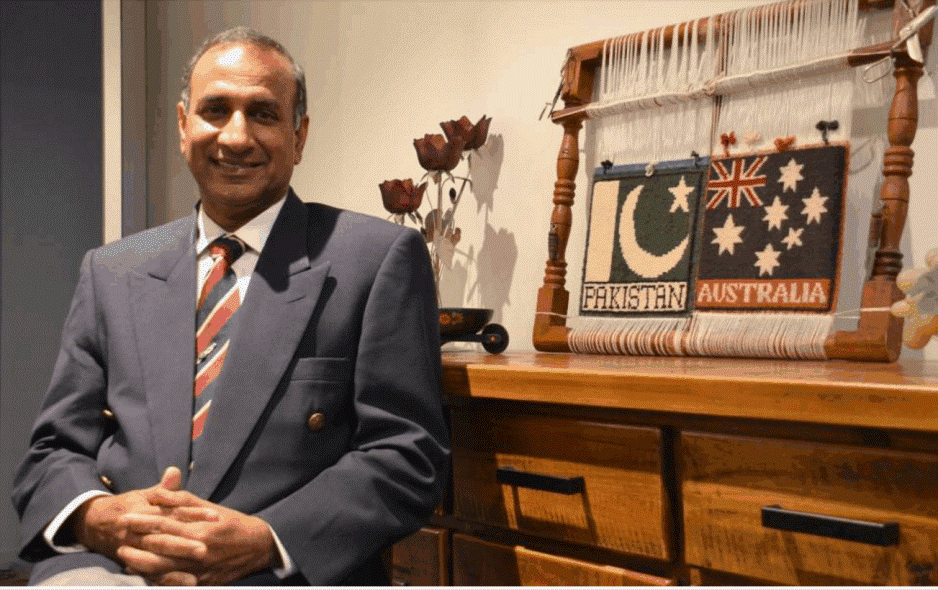
Sada-e-Watan
Sydney ™
sadaewatan@gmail.com

A fight to bridge the gap in war history

Brig Zahoor Ahmed
Black Mountain business owner and retired Army Brigadier hopes to bring together nations on Anzac Day

Rachel Baxter
The Guyra Argus is an English-language newspaper published weekly in Guyra, New South Wales. On 2 May 2017 edition, they published a Exclusive Interview of Former Defence Advisor of Pakistan High Commission Brig ® Zahoor Ahmed. We are reprinting in Sada –e-Watan with the thanks of the weekly “Guyra Argus”.
Over 74,000 Indians were killed and
67,000 injured, fighting with the British Indian Army in the First World
War.
And at Gallipoli, about 5,000 troops made up the 7th Indian Mountain
Artillery Brigade – including the 26th Jacob’s Mountain Battery [now Pakistan
Army] and the 21st Kohat Mountain Battery [now Pakistan Army].
That’s
why retired Pakistan Army Brigadier and Black Mountain business owner Zahoor
Ahmed and his family erected the flag of Pakistan at this year’s Anzac Day
march in Guyra.
Mr Zahoor Ahmed told The Argus each Anzac Day he tries to
bring about awareness of the contribution of the British Indian Army in the
First World War and at Gallipoli.
“Last year we were lobbying with the
government of Australia to allow Pakistan to participate in the Anzac Day
parade, in front of the war memorial,” he said.
“And last year was the
first year that they [the government] recognised it and allowed it.
“And
we are trying to replicate this in small towns and wherever we are
living.”
History states that by 1918, the strength of the British Indian
Army was 573,000 men and the Indian government decided India could afford to
provide two infantry divisions and a cavalry brigade in the event of a European
war.
On the Western Front, 140,000 troops saw active service, 90,000 in
the front-line Indian Corps and 50,000 in auxiliary battalions.
And in
the Second World War, the Indian Army became the largest all-volunteer force in
history – with over 2.5 million men.
After the partition of India in
1947, the Indian Army was divided with two thirds of its assets retained by the
Domination of India and one third going to the new Domination of
Pakistan.
After the Second World War, most of the remainder of the Indian
Army’s Muslim personnel proceeded to join the newly created Pakistan Army and
several hundred British officers remained in Pakistan on contract until the
early 1950s.
Following the partition of India and the Indian Army, the
two new armies fought in the First Kashmir War – marking the start of a bitter
rivalry which has continued into the 21st century.
But Mr Zahoor Ahmed
told The Argus, it was about more than victory and defeat.
“It’s just
about paying our respects to those who fell,” he said.
“It’s about the
miseries that we all suffer together.
“We also lost hundreds of people
from those battalions which are now part of the Pakistan Army and India also
lost. This is why we want to participate.”

COMING TOGETHER: Zahoor Ahmed wants to raise awareness about why the flag of Pakistan should be flown on Anzac Day across Australia.